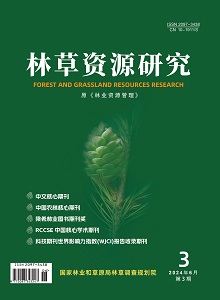Based on data from 77 fixed plots of Pinus massoniana in the 9th consecutive forest inventory data in Guangdong Province in 2017,principal component analysis and cluster analysis methods are used to evaluate the site quality of Pinus massoniana in this study.Research results showed that according to the principal component analysis method,the cumulative contribution rate of the seven principal components including gravel content,soil thickness,landform,slope position,humus layer thickness,slope and litter layer thickness reached 86.32%,and the overall impact is great.The cluster analysis method shows that when the threshold value is 0.081,77 plots can be grouped into 4 types,and the unit area accumulation of type Ⅰ,Ⅱ,Ⅲ,and Ⅳ is 59.41m3/hm2,45.38m3/hm2,80.07m3/hm2 and 73.48m3/hm2,types Ⅲ and Ⅳ are significantly higher than types Ⅰ and Ⅱ.Site factors such as gravel content,soil thickness,humus layer thickness and litter layer thickness have a greater effect on the site quality of Pinus massoniana.

